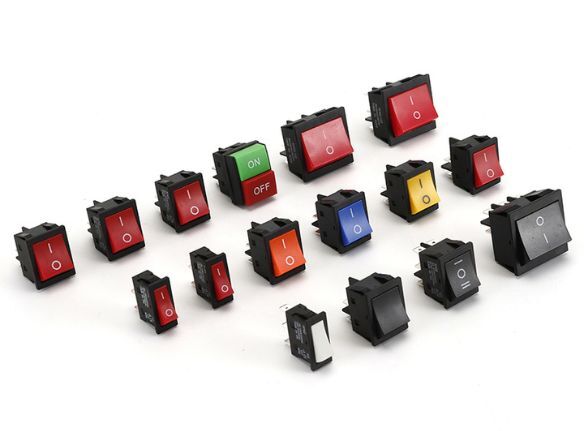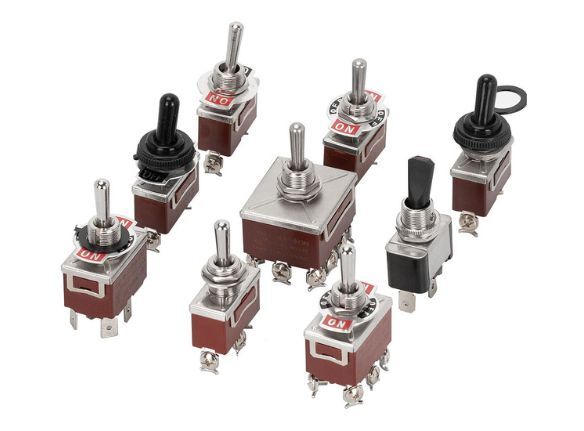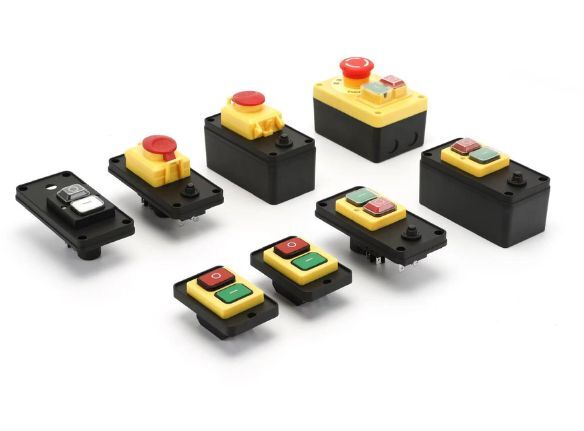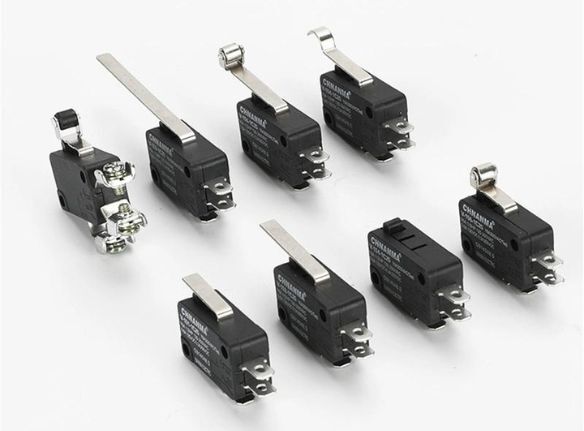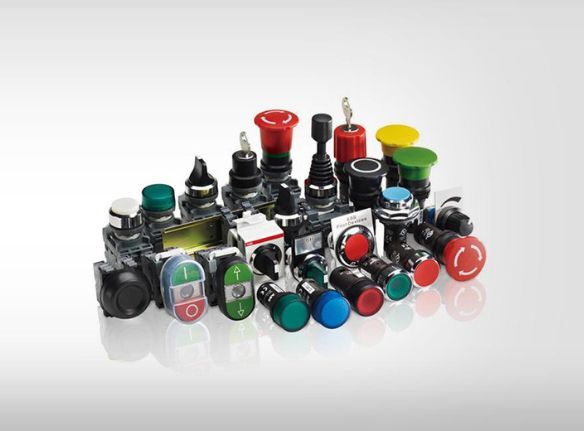Preface
Electrical switches play a crucial role in our daily lives, serving not just as simple control elements but as bridges connecting us to our electrical appliances. Although switches may not be considered major components in home decoration, their importance cannot be overlooked as they directly relate to electrical safety and convenience of use. Low-quality switch panels may lead to electric shock accidents or fire hazards, making the selection of appropriate electrical switches vital for home safety. This article will delve into the types, materials, functions, safety features, brand selection, and purchasing considerations of electrical switches to help you make informed decisions when selecting products.
I. Basic Concepts and Functions of Electrical Switches
An electrical switch is an electrical component used to control the flow of current. By opening and closing circuits, switches can allow or stop the flow of electricity, thereby enabling or disabling electrical appliances. In modern homes, electrical switches are not merely simple control devices; they also serve multiple functions including ensuring electrical safety, enhancing convenience, and beautifying the home environment.
With technological advancements, electrical switches have evolved from initial mechanical switches to today’s smart switches, with functions expanding from simple on/off control to timer control, remote operation, scene modes, and other diverse functionalities. Understanding the characteristics and applicable scenarios of different types of switches is essential for selecting suitable products.
II. Classification of Electrical Switches
2. Classification by Function
Electrical switches can be classified into “gang” and “way” types based on functionality.
Gang refers to how many lights a switch can control, with the number of buttons on the panel corresponding to the number of gangs. For example, a single button is called a single gang, and two buttons are called a double gang.
Way refers to how many switches can control a single light, such as single-way, two-way, or multi-way. In practical applications, single-way and two-way are the most common. Two-way switches are mainly used in large living rooms and at bedside in bedrooms, especially in winter, to avoid the inconvenience of getting out of bed to turn lights on or off.
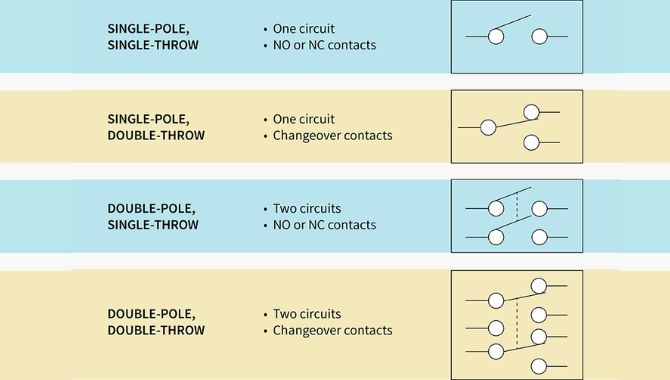
3. Classification by Type
Based on working principles and technical characteristics, electrical switches can be classified into the following types:
Mechanical switches: These are the most common type of switches, usually controlled by a physical button or lever. Their advantages include simple structure and low , but they require a certain amount of force to operate and have a relatively shorter lifespan of about 10,000 operations.
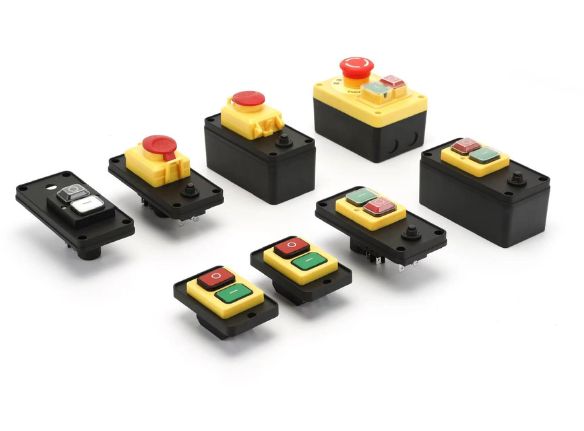
Electronic switches: These switches use electronic components to control current flow, usually featuring higher sensitivity and longer lifespan, capable of over 50,000 operations. Electronic switches can be operated via remote control or smartphones, making them suitable for modern smart homes.
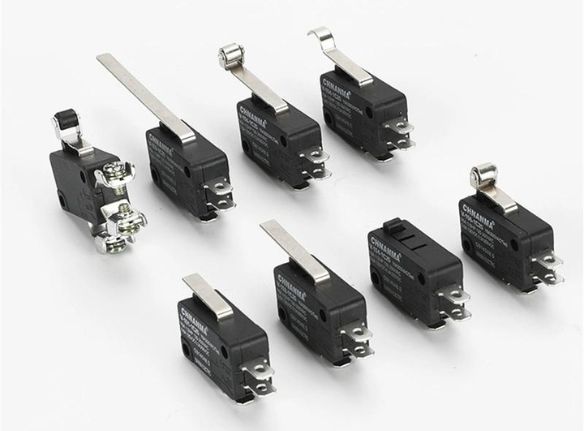
Touch switches: Touch switches are a new type of switch where users only need to lightly touch the switch surface to control appliances. They have a fashionable appearance, suitable for modern home design, with a typical lifespan of around 30,000 operations.
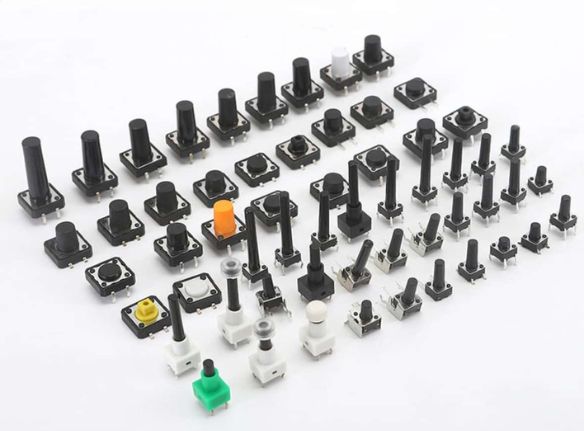
Smart switches: With the popularization of smart homes, smart switches are gradually becoming mainstream in the market. They can connect with other smart devices via Wi-Fi or Bluetooth, enabling remote control and timed switching functions. The lifespan of smart switches depends on the quality of their internal electronic components, typically ranging from 30,000 to 50,000 operations.

III. Materials and Quality of Electrical Switches
1. Casing Materials
The casing material of electrical switches directly affects their safety and lifespan. Common casing materials include PC (polycarbonate) and USB plastic, with PC being the highest quality.
PC (polycarbonate) has excellent flame retardancy, insulation, heat resistance, and impact resistance, making it the preferred material for high-end switch sockets. However, PC materials also vary in quality; low-quality PC may turn yellow after a period of use. High-end switch sockets usually use high-quality PC for both the front panel and base casing, while ordinary products may add PP and ABS plastics in hidden areas to reduce costs.
When purchasing, pay attention to product descriptions or ask sales personnel about casing materials, prioritizing products made entirely of PC to ensure product safety and durability.
2. Current-Carrying Component Materials
Current-carrying components are key parts for conducting electricity inside switches, and their material directly affects the switch’s conductivity performance and lifespan.
Phosphor bronze is currently the most mainstream material for current-carrying components, featuring high fatigue resistance, excellent corrosion resistance, and oxidation resistance. Switches using phosphor bronze as current-carrying components will not show surface oxidation or discoloration even after long-term use, making it the primary choice for current-carrying components in brand-name switch sockets.
Brass has good conductivity but poor corrosion resistance and toughness. Socket inserts made of brass can easily deform after long-term use, so switches with brass current-carrying components are not recommended.
When purchasing electrical switches, look for phosphor bronze as the material for current-carrying components to ensure the long-term stability and safety of the switch.
3. Contact Materials
Contacts are the connection points of conductive parts during switching, and their material directly affects the switch’s conductivity performance and lifespan.
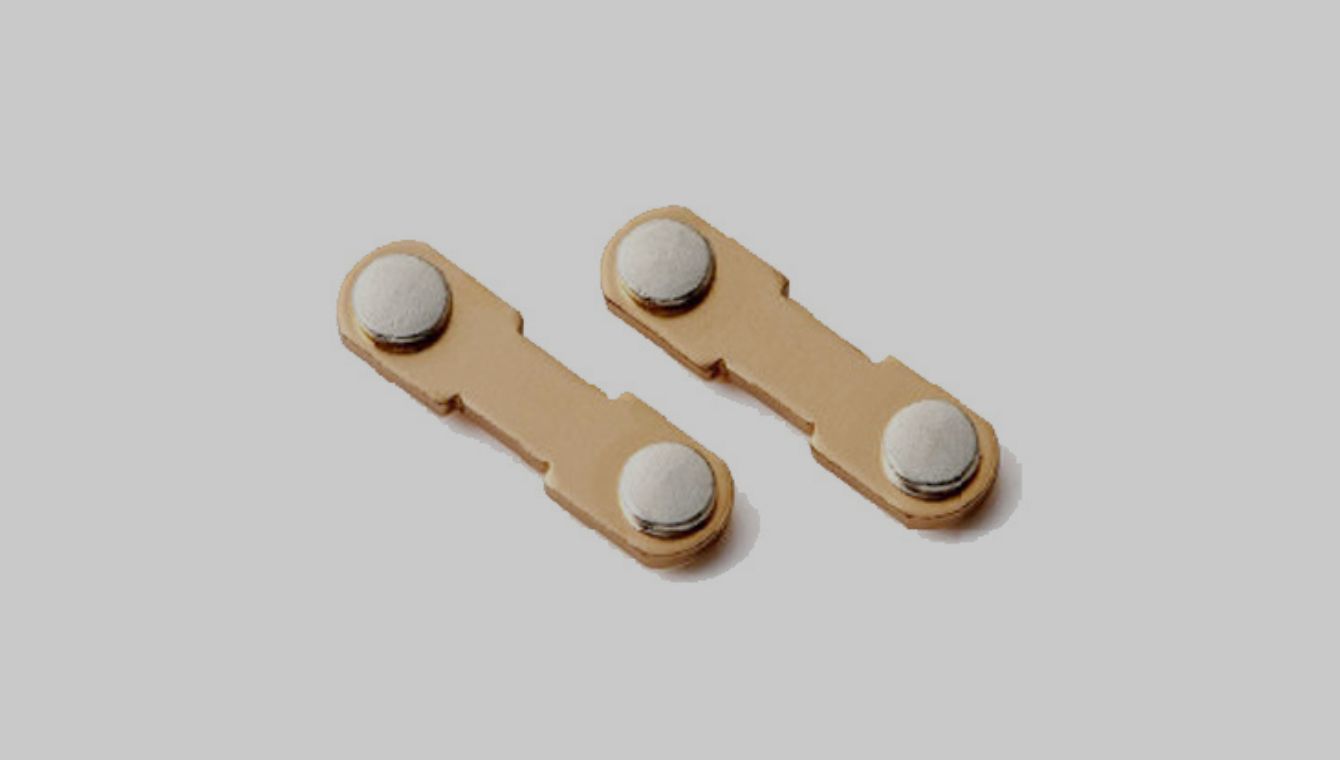
Common contact materials include pure silver and silver alloys. Although pure silver has good conductivity, it is soft and can easily deform after multiple uses, and is also prone to oxidation. Therefore, high-quality switch socket contacts generally use silver-nickel alloy or silver-cadmium alloy, with silver-nickel alloy being the best due to its good hardness and conductivity, and resistance to deformation.
When purchasing, ask sales personnel about contact materials, prioritizing products with silver-nickel alloy contacts to ensure the long-term stability and reliability of the switch.
IV. Safety of Electrical Switches
The safety of electrical switches is the most important consideration when purchasing, mainly reflected in flame retardancy and protective shutters.
1. Flame Retardancy
High-quality PC material has excellent flame retardant properties, maintaining stability in high-temperature environments and resisting combustion, thereby effectively reducing fire risks. Therefore, when purchasing electrical switches, check the product’s flame retardant rating and prioritize products with high flame retardant ratings.
2. Protective Shutters
Protective shutters are safety devices designed to prevent accidental contact by children. They work on the principle of one-sided self-locking, opening only when both pins are inserted simultaneously, preventing single pins from being inserted, effectively preventing children from inserting metal objects into sockets out of curiosity and causing electric shock accidents.
According to new national standards, sockets must be designed with protective shutters. When purchasing, check whether the product is equipped with protective shutters, especially for families with children, who should pay particular attention to this safety feature.
V. Prices and Brands of Electrical Switches
1. Price Ranges
The s of electrical switches vary depending on brand, type, and functionality. Generally:
- Mechanical switches typically range from 10 to 50 yuan, suitable for families with limited budgets.
- Electronic switches generally range from 50 to 200 yuan, providing a better user experience.
- Touch switches typically range from 100 to 300 yuan, with fashionable appearances and convenient operation.
- Smart switches range from 200 to 1000 yuan, offering rich functionalities, suitable for users pursuing high-tech lifestyles.
When choosing switches, consumers should make reasonable choices based on their needs and budget, without blindly pursuing high-d products, but also not excessively pursuing low s at the expense of quality and safety.
2. Major Brands
There are numerous brands in the electrical switch market, mainly divided into imported brands and domestic brands.
Imported brands include Siemens (Germany), Schneider Electric (France), Legrand (France), Panasonic (Japan), Simon (Spain), etc. These brands usually have stronger design sense and higher aesthetic value but are also relatively more expensive.
Major domestic brands include Bull, Chint, Delixi, etc. These brands are economical and quality-assured, making them the first choice for value for money.
When purchasing, it is recommended to choose products from well-known brands and avoid choosing obscure or small brands, as switch sockets directly relate to electrical safety and quality should not be compromised for lower s.
3. Brand Recommendations
Based on different budgets, consider the following brands and series:
High budget: Consider Siemens Vega series and Schneider Electric Yishan series, which both use frameless designs, have high aesthetic value, and can match various decoration styles. The Siemens Vega series is finely crafted with good tactile feel and high aesthetic value, available in LED and non-LED versions, with LED versions being more expensive. The main feature of the Schneider Electric Yishan series is the ability to easily change face plates, similar to changing phone cases, and it won the 2017 German iF International Design Award.
Medium budget: Consider Schneider Electric Haorang series and Legrand Shidian series. The Schneider Electric Haorang series is a new product, much cheaper than the Yishan series, offering good value for money with a frameless design, design concept based on picture frames, and featuring fluorescent strips. The Legrand Shidian series also uses a frameless design with fluorescent strips, is affordably d, and offers good value for money.
Low budget: Consider domestic brands like Bull G28 series and Chint NEW2-L series. These products also use frameless designs, have decent aesthetics, solid quality, and affordable s, making them the first choice for value for money. The Bull G28 series features fluorescent strips, has an imposing appearance, rounded edges, substantial materials, good tactile feel, and comes in three classic colors: white, gold, and gray. The Chint NEW2-L series uses a pure flat large panel design, is simple and versatile, and is slightly cheaper than the Bull G28 series.
VI. Key Considerations When Purchasing Electrical Switches
When purchasing electrical switches, consider the following aspects comprehensively:
1. Purpose
Choose appropriate types based on actual needs. For ordinary household appliances, mechanical or smart switches can be chosen; for frequently switched locations, electronic switches with longer lifespans should be chosen; for those pursuing smart living, smart switches can be chosen.
2. Installation Location
Switches should be installed in convenient locations, usually at doorways or beside beds, ensuring convenience of use. For large living rooms and bedside in bedrooms, consider using two-way switches to enhance convenience.
3. Power Matching
Ensure the rated power of the switch matches the power of the controlled appliance. For high-power appliances such as air conditioners and water heaters, choose dedicated switches with higher rated power.
4. Materials and Quality
Prioritize products with PC casings, phosphor bronze current-carrying components, and silver-nickel alloy contacts to ensure product safety and durability.
5. Safety
Check whether the product has good flame retardancy and protective shutter design, especially for families with children, who should pay particular attention to these safety features.
6. Brand and Price
Choose products from well-known brands, making reasonable choices based on your budget and needs, without blindly pursuing high-d products, but also not excessively pursuing low s at the expense of quality and safety.
7. Appearance and Style
Consider whether the appearance of the switch coordinates with your home style. There are various styles of switch panels on the market, such as minimalist, European, modern, etc., which can be chosen according to your decoration style.
8. Additional Functions
Consider whether you need additional functions such as LED indicators or fluorescent strips based on your needs. These functions can provide dim light in dark environments, helping us easily find switch panels at night, enhancing convenience of use.
VII. Common Misconceptions and Precautions
When purchasing and using electrical switches, avoid the following common misconceptions:
1. Overemphasizing Aesthetics, Undervaluing Safety
Although the design of switches is important, safety should be the primary consideration. Aesthetics should not be pursued at the expense of product quality and safety.
2. Excessive Pursuit of Low Prices
Switches directly relate to electrical safety, and quality should not be compromised for lower s. High-value domestic brands are not much more expensive than obscure brands but offer assured safety and quality.
3. Ignoring Lifespan
Different types of switches have different lifespans, and appropriate products should be chosen based on frequency of use. For frequently used locations, choose products with longer lifespans.
4. Ignoring the Rationality of Installation Locations
The installation location of switches should be convenient for operation, avoiding installation in locations that are difficult to reach or inconvenient to operate. For special locations, such as bedside in bedrooms, consider using two-way switches to enhance convenience.
5. Improper Usage Methods
When using electrical switches, note the following points:
- Do not operate the switch of a socket with an appliance in use, as working current may cause electric shock and burning, leading to poor contact.
- Regularly check the working condition of switches to ensure normal operation, avoiding appliance damage due to switch failures.
- Avoid frequently switching appliances on and off, reducing unnecessary operations to extend the lifespan of switches.
Conclusion
Although electrical switches may not be considered major components in home decoration, their importance cannot be overlooked. Choosing appropriate electrical switches not only enhances the convenience of life but also effectively ensures home safety. When purchasing, comprehensively consider factors such as product type, material, safety, brand, , etc., to make informed decisions. We hope this article provides valuable reference for you when purchasing electrical switches, helping you choose products that best suit your needs.



